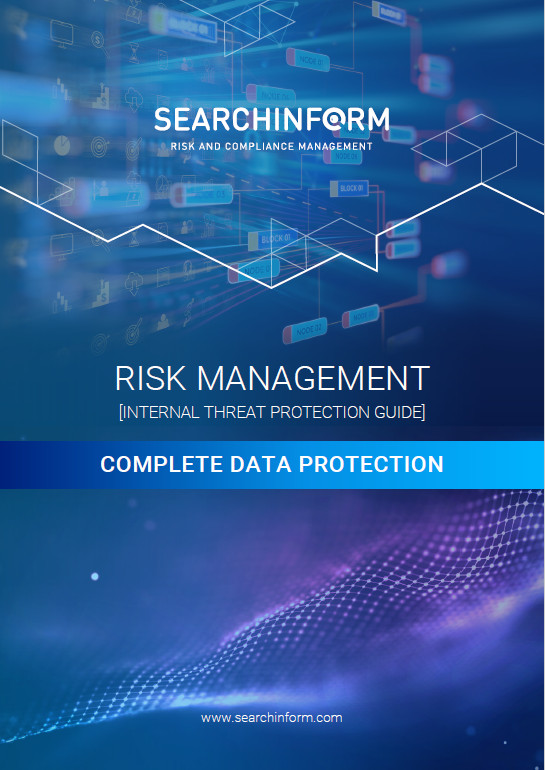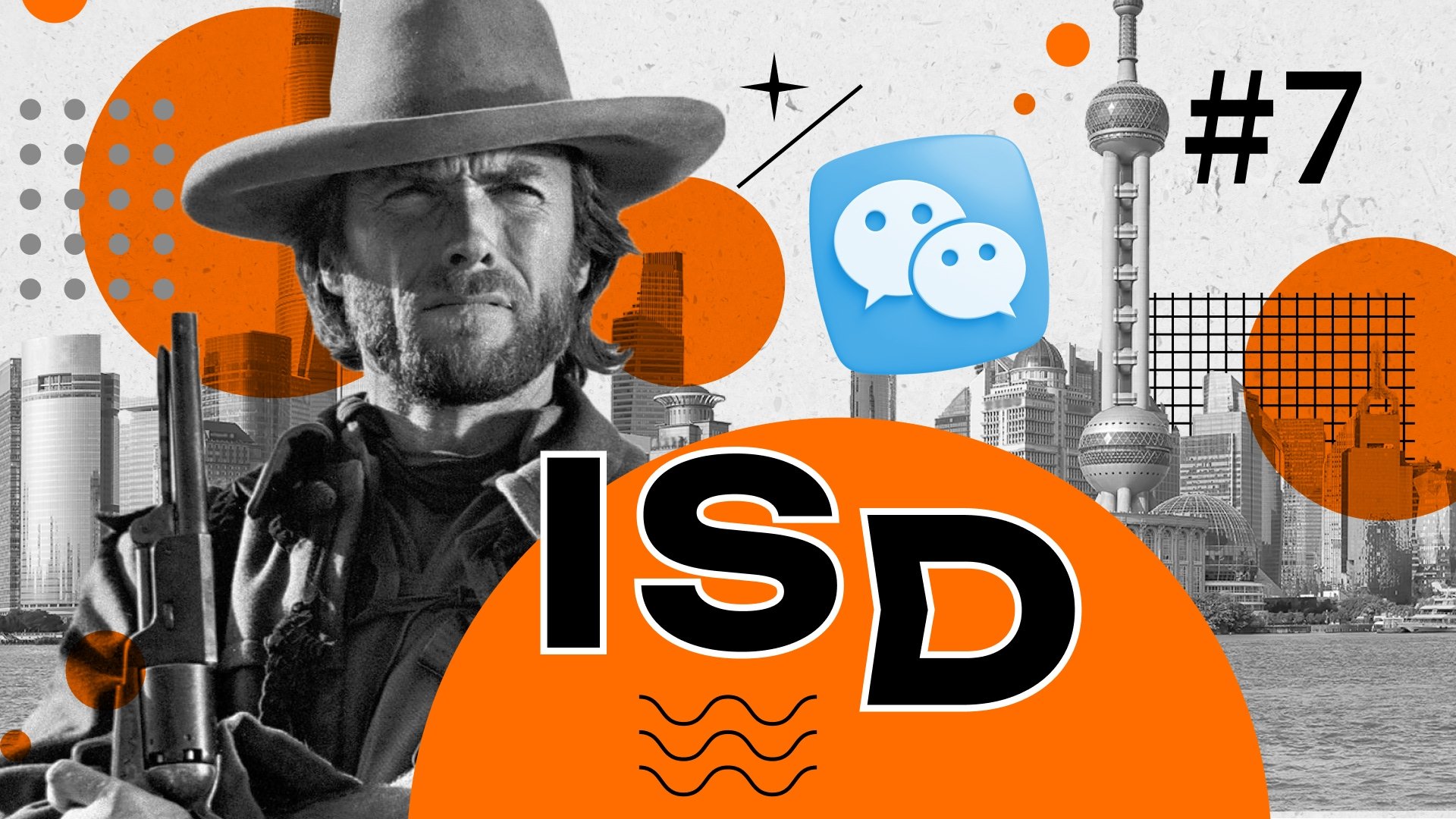Integrated Risk Management: A Comprehensive Guide
- Integrated Risk Management Overview
- Definition and Core Principles
- Differences Between Traditional and Integrated Approaches
- Importance in Today’s Risk-Laden Environment
- Components of Integrated Risk Management: Building the Backbone of Resilience
- Risk Identification and Assessment Frameworks: The Art of Seeing What’s Ahead
- Tools and Technologies Enabling IRM: The Engines Driving Efficiency
- Governance, Risk, and Compliance (GRC) Integration: The Glue That Holds It Together
- Data Centralization and Interconnectivity: Breaking Down Silos
- Culture of Continuous Monitoring: A Mindset Shift
- Methodologies in Integrated Risk Management: Turning Strategy into Action
- Risk Quantification and Prioritization Models: The Science of Making Risks Manageable
- AI and Machine Learning in Risk Prediction: Staying Ahead of the Curve
- Scenario Planning and Risk Simulation: Preparing for the Unexpected
- Risk Aggregation and Heat Mapping: Visualizing Risk Landscapes (New Subtopic)
- Behavioral Analysis and Human-Centric Risk Models: Understanding People-Driven Risks (New Subtopic)
- Benefits of Integrated Risk Management: Why It’s a Game-Changer
- Financial and Operational Efficiency: Turning Risk into Opportunity
- Enhanced Decision-Making with Real-Time Insights: The Power of Now
- Strategic Advantages and Compliance Benefits: Beyond Risk Mitigation
- Improved Stakeholder Confidence: Building Trust and Transparency (New Subtopic)
- Business Resilience and Continuity: Weathering Any Storm (New Subtopic)
- Challenges in Implementing Integrated Risk Management: Navigating the Hurdles
- Common Organizational Barriers: Breaking the Status Quo
- Data Integration and Technological Limitations: Bridging the Gaps
- Cultural Resistance and Change Management: Winning Hearts and Minds
- Balancing Innovation with Budget Constraints (New Subtopic)
- Aligning IRM with Organizational Goals: Finding the Fit (New Subtopic)
- Future Trends in Integrated Risk Management: Evolving for Tomorrow
- Predictive Analytics and Emerging Technologies: Risk Management Goes Proactive
- The Role of Blockchain in Risk Management: Reinventing Trust and Transparency
- Trends in Regulatory Requirements Shaping IRM: Adapting to a Tighter Grip
- The Integration of Cybersecurity into IRM: A Unified Front
- Human-Centric Risk Management: Balancing Technology with the Human Factor
- SearchInform Solutions for Integrated Risk Management: Elevating Your Risk Strategy
- Tailored Tools for a Seamless IRM Experience
- Core Features That Redefine IRM:
- How SearchInform Enhances Compliance and Proactive Risk Management
- Unlocking a Culture of Risk Awareness with SearchInform (New Subtopic)
-
-
-
-
-
-
- Understanding Financial Statement Fraud and Cybersecurity
- Combatting Fund Transfer Fraud with Cybersecurity Measures
- Combatting Invoice Fraud: Cybersecurity Strategies for Businesses
- Mobile Payment Fraud: Understanding the Risks and Prevention Strategies
- Online Banking Fraud: How to Stay Protected
- Understanding Payment Card Fraud and How to Prevent It
- Cyber Tax Fraud: Understanding and Preventing It
- Understanding Transaction Fraud in Cybersecurity
-
-
-
-
-
-
-
-
-
-
-
- Breach Attacks: Comprehensive Guide
- Cyber Attacks on Banks: Threat Landscape and Countermeasures
- Understanding Cyber Attack Vectors: the Anatomy of Cyber Threats
- Cyber Attacks in Healthcare
- Understanding Cyber Attacks on Critical Infrastructure
- Combatting Government Cyber Attacks: Strategies and Solutions
- State-Backed Cyber Attacks: Insights and Solutions
- Supply Chain Attacks
- Cyber Attack Prevention: Practical Tips and Solutions
- Types of Cyber Attacks: Understanding the Threats
-
-
- A Comprehensive Guide to Access Control Lists (ACLs)
- The Threat of Broken Access Control: How to Protect Your Systems?
- Discretionary Access Control (DAC)
- Understanding the Core Concepts of Mandatory Access Control
- Network Access Control: Key Strategies and Implementation Tips
- Understanding Non-Discretionary Access Control (NDAC)
- Understanding Access Control Policies for Enhanced Security
- Role Based Access Control (RBAC): A Comprehensive Guide
- Rule Based Access Control (RuBAC): A Comprehensive Guide
-
- Biometrics: What Is It and How Does It Work?
- What is Data Access and Why is it Important?
- What is Data Access Control (DAC)?
- What is Federated Identity and Federated Identity Management?
- IAM: Identity and Access Management
- Machine Identity Management
- Microsoft Identity Manager (MIM): A Comprehensive Overview
-
-
-
-
-
-
- Nonpublic Personal Information: What It Is and Why It Matters
- PII Data Classification: Importance, Challenges, and Best Practices
- Personal Information Protection: How to Protect Your Personal Information
- PHI vs PII: A Comparative Analysis of Protected Health Information and Personally Identifiable Information
- Understanding Personally Identifiable Information (PII) Protection
-
-
-
-
-
-
-
-
-
-
-
-
Imagine a ship navigating treacherous waters. Without a clear map and real-time insights, the crew risks running aground. For modern businesses, integrated risk management (IRM) serves as that indispensable map, helping them steer through today's complex risk landscape. This article explores the principles, methodologies, and transformative power of IRM, as well as how SearchInform empowers organizations to harness its full potential.
Integrated Risk Management Overview
Definition and Core Principles
Integrated risk management is a holistic approach that unifies various risk domains—financial, operational, strategic, and compliance—into a single cohesive framework. Unlike traditional siloed risk management methods, IRM emphasizes interconnectedness, proactive monitoring, and strategic alignment. By integrating risk data and processes, organizations gain a comprehensive view of their vulnerabilities and strengths.
Differences Between Traditional and Integrated Approaches
Traditional risk management often operates in isolated silos, focusing on specific areas like cybersecurity or financial risk independently. IRM breaks these barriers by centralizing risk information and fostering collaboration across departments. This interconnected approach enables better decision-making and risk mitigation.
Importance in Today’s Risk-Laden Environment
In an era marked by rapid technological change, regulatory complexities, and global uncertainties, IRM is not a luxury—it’s a necessity. Businesses face risks ranging from cyber threats to supply chain disruptions. IRM helps organizations anticipate these challenges and adapt with agility, safeguarding their operational continuity and reputation.
As we delve deeper, it’s essential to understand the building blocks of integrated risk management. From identifying risks to leveraging advanced tools, the components of IRM provide the foundation for a resilient and proactive risk strategy. Let’s explore these critical elements next.
As we delve deeper, it’s essential to understand the building blocks of integrated risk management. From identifying risks to leveraging advanced tools, the components of IRM provide the foundation for a resilient and proactive risk strategy. Let’s explore these critical elements next.
Components of Integrated Risk Management: Building the Backbone of Resilience
Integrated risk management thrives on a strong, interconnected foundation. By unifying various risk processes, organizations can transform uncertainty into opportunity. Let’s dive into the essential components that make IRM a strategic game-changer.
Risk Identification and Assessment Frameworks: The Art of Seeing What’s Ahead
A successful IRM strategy starts with sharp risk identification and robust assessment. Frameworks like ISO 31000 and COSO ERM act as guiding stars, providing standardized methods to categorize risks based on severity, probability, and potential impact. These frameworks ensure no risk is overlooked, from operational vulnerabilities to strategic threats.
and perform with SearchInform DLP:
But frameworks alone aren’t enough—they need to be actionable. Organizations increasingly combine these methodologies with dynamic tools like SWOT analysis and Bow-Tie risk modeling, blending theoretical rigor with practical insights.
Tools and Technologies Enabling IRM: The Engines Driving Efficiency
IRM’s potential is fully realized through cutting-edge tools that transform data into decisions. Key enablers include:
- Artificial Intelligence and Machine Learning: These technologies decode complex datasets to identify patterns and predict risks with uncanny accuracy. For instance, AI-driven algorithms can detect anomalies in financial transactions, flagging potential fraud before it escalates.
- Real-Time Dashboards: Interactive dashboards provide a panoramic view of risk metrics, empowering leadership teams to monitor threats in real-time.
- Automated Reporting Systems: These tools eliminate manual errors, reduce lag, and ensure compliance with regulatory standards, freeing teams to focus on strategic initiatives.
Governance, Risk, and Compliance (GRC) Integration: The Glue That Holds It Together
GRC integration is the cornerstone of IRM, streamlining governance structures with risk management processes and compliance mandates. By aligning these areas, organizations create a seamless flow of information, ensuring every decision supports overarching goals.
Take, for example, cross-departmental risk coordination: when compliance teams share insights with cybersecurity experts, they collectively mitigate vulnerabilities that would otherwise go unnoticed.
Data Centralization and Interconnectivity: Breaking Down Silos
A critical, often overlooked, element of IRM is the unification of disparate data sources. Centralized platforms ensure that departments no longer operate in silos. Unified data lakes provide a single source of truth, fostering collaboration and eliminating redundancy.
This interconnectivity is vital for risk scenario planning. By combining historical data from finance, operations, and IT, organizations can model comprehensive "what-if" scenarios, ensuring they're prepared for any eventuality.
Culture of Continuous Monitoring: A Mindset Shift
IRM isn’t a one-time project—it’s an evolving discipline that thrives on a culture of continuous monitoring. This shift requires:
- Proactive Risk Audits: Regular reviews of risk metrics keep organizations agile in a volatile landscape.
- Employee Engagement: Frontline employees often spot risks first. By embedding risk awareness into company culture, businesses create an empowered, vigilant workforce.
Now that we’ve explored the essential components of integrated risk management, it’s time to see these tools and frameworks in action. In the next section, we’ll unravel the methodologies that bring IRM strategies to life, revealing how organizations quantify, prioritize, and predict risks with precision. Let’s delve into the "how" behind IRM’s transformative power.
Methodologies in Integrated Risk Management: Turning Strategy into Action
Methodologies are the lifeblood of integrated risk management, transforming abstract concepts into actionable strategies. They help businesses quantify, predict, and prepare for risks, ensuring resilience in the face of uncertainty. Let’s uncover the methods that drive IRM success and reveal their practical applications.
Risk Quantification and Prioritization Models: The Science of Making Risks Manageable
How do organizations decide which risks demand immediate attention? Risk quantification and prioritization models provide the answer. Techniques such as Monte Carlo simulations and probabilistic risk assessments assign measurable values to risks, ranking them by their potential impact and likelihood.
Imagine a retail company assessing supply chain risks. Using these models, they can calculate the financial losses associated with delays and prioritize mitigation efforts for the most critical points in their network. This scientific approach ensures resources are directed where they’re needed most.
AI and Machine Learning in Risk Prediction: Staying Ahead of the Curve
The future of risk management lies in leveraging technology that thinks ahead. AI and machine learning redefine risk prediction, sifting through massive datasets to identify patterns that humans might miss.
For instance, financial institutions use AI to detect fraudulent transactions by analyzing spending behavior in real time. Similarly, AI-powered systems can predict equipment failures in manufacturing, allowing for preventive maintenance and avoiding costly downtimes.
Machine learning goes beyond detection—it evolves. As algorithms learn from new data, their predictive capabilities improve, ensuring organizations stay one step ahead of emerging threats.
Scenario Planning and Risk Simulation: Preparing for the Unexpected
What would happen if a major supplier failed or a cyberattack crippled operations? Scenario planning and risk simulation answer these critical questions. These methodologies enable organizations to model hypothetical situations, exploring the cascading effects of potential risks.
By simulating a ransomware attack, for example, a healthcare provider can identify vulnerabilities in its IT infrastructure, test its incident response plan, and ensure patient data remains secure. These simulations aren’t just about preparation; they’re about building confidence to handle the unexpected.
Risk Aggregation and Heat Mapping: Visualizing Risk Landscapes (New Subtopic)
Quantifying risks is only part of the equation—understanding their interconnections is just as critical. Risk aggregation consolidates data from various sources to paint a holistic picture of organizational vulnerabilities.
Heat maps offer a powerful visual representation, highlighting high-priority risks in a clear, digestible format. For example, a heat map for a global logistics firm might show geopolitical risks in red-hot zones, prompting immediate action in those areas.
Behavioral Analysis and Human-Centric Risk Models: Understanding People-Driven Risks (New Subtopic)
Many risks are driven by human behavior—whether intentional or accidental. Behavioral analysis methodologies examine patterns like insider threats, employee fatigue, or noncompliance to predict and prevent risks.
By monitoring anomalous employee activities, such as accessing restricted files late at night, organizations can address potential issues before they escalate. Incorporating human-centric risk models adds an invaluable layer of depth to IRM strategies.
Armed with these methodologies, organizations can transform their approach to risk management, moving from reactive responses to proactive resilience. But methodologies alone don’t ensure success—it’s the benefits they unlock that truly elevate businesses. Up next, we’ll explore the tangible advantages of integrated risk management and why it’s a must-have in today’s world.
Benefits of Integrated Risk Management: Why It’s a Game-Changer
Integrated Risk Management (IRM) is more than just a strategy—it’s a transformative framework that empowers organizations to thrive in a world filled with uncertainties. From boosting financial efficiency to unlocking strategic potential, the benefits of IRM ripple through every layer of an organization. Let’s dive into the real-world advantages that make IRM a must-have.
Financial and Operational Efficiency: Turning Risk into Opportunity
Imagine eliminating redundancies, streamlining workflows, and reallocating resources where they matter most. That’s the power of IRM. By centralizing risk management processes, organizations reduce duplication and waste while increasing operational efficiency.

- Cost Savings: IRM identifies inefficiencies across departments, from supply chain management to IT, leading to measurable savings.
- Resource Optimization: With a holistic view of risks, organizations can prioritize critical areas, ensuring resources are allocated effectively.
For example, a global manufacturing firm used IRM to identify and address production delays caused by supply chain disruptions, saving millions in potential losses and ensuring timely delivery.
Enhanced Decision-Making with Real-Time Insights: The Power of Now
In a fast-paced world, timely decisions are the key to staying ahead. IRM equips decision-makers with real-time, data-driven insights, enabling swift responses to emerging threats.
- Early Warning Systems: Predictive analytics within IRM frameworks flag risks before they escalate, allowing for proactive measures.
- Informed Leadership: Dashboards and reporting tools provide executives with a clear risk landscape, empowering them to make strategic decisions with confidence.
Picture a retail chain monitoring weather patterns in real time to anticipate supply disruptions. IRM tools allow them to reroute inventory and maintain seamless operations—a critical advantage in a competitive market.
Strategic Advantages and Compliance Benefits: Beyond Risk Mitigation
IRM doesn’t just protect businesses; it propels them forward. A strong IRM framework enhances strategic planning by aligning risk management with organizational goals.
- Competitive Edge: Companies that embrace IRM are more adaptable, gaining a strategic advantage in dynamic markets.
- Regulatory Compliance: With compliance integrated into the IRM process, organizations avoid costly fines and reputational damage.
Consider a financial institution navigating evolving data privacy regulations. Using IRM, they seamlessly incorporate compliance requirements into their operations, ensuring legal adherence without disrupting business growth.
Improved Stakeholder Confidence: Building Trust and Transparency (New Subtopic)
Stakeholders—whether customers, investors, or employees—value organizations that manage risks effectively. IRM fosters transparency, demonstrating a commitment to stability and ethical practices.
- Investor Assurance: Transparent risk management practices attract investors looking for stable, well-governed organizations.
- Customer Loyalty: Proactively managing risks like data breaches builds trust with customers, enhancing brand reputation.
Business Resilience and Continuity: Weathering Any Storm (New Subtopic)
The ultimate goal of IRM is to ensure business continuity, even in the face of crises. By anticipating and preparing for potential disruptions, organizations build resilience into their DNA.
- Crisis Management: IRM enables swift, coordinated responses to unexpected events, minimizing impact.
- Long-Term Sustainability: A robust risk management culture ensures organizations are prepared to thrive in changing landscapes.
For instance, during a global health crisis, a healthcare organization leveraged IRM to manage patient influx, secure supply chains, and maintain compliance with shifting regulations, ensuring uninterrupted care.
The benefits of integrated risk management are clear, but implementing it comes with challenges. How can organizations overcome barriers like data silos and cultural resistance to fully unlock IRM’s potential? Let’s explore these challenges next and uncover strategies for success.
Challenges in Implementing Integrated Risk Management: Navigating the Hurdles
The road to integrated risk management (IRM) is paved with opportunities, but it’s not without its challenges. Organizations must tackle a mix of technological, cultural, and organizational barriers to fully reap the benefits of IRM. Let’s unpack these challenges and explore how businesses can overcome them.
Common Organizational Barriers: Breaking the Status Quo
One of the biggest obstacles to IRM implementation is resistance to change. Traditional risk management practices often operate in silos, and transitioning to an integrated framework can seem daunting.
- Lack of Expertise: Many organizations lack the in-house knowledge needed to design and implement an IRM strategy. Without skilled personnel, even the best tools may fall short.
- Fragmented Practices: Disconnected risk management approaches lead to inefficiencies and blind spots, making integration more complex.
- Leadership Challenges: Leaders may struggle to prioritize IRM when faced with competing demands, delaying progress.
Solution: Strong leadership commitment is key. Building cross-functional teams and investing in training can help bridge knowledge gaps and unify fragmented practices.
Data Integration and Technological Limitations: Bridging the Gaps
Data is the backbone of IRM, but consolidating it from disparate sources poses a significant challenge. Legacy systems, incompatible technologies, and data silos create bottlenecks that hinder seamless integration.
- Legacy Systems: Older technologies often lack the flexibility to integrate with modern IRM tools.
- Data Silos: Departments may hoard data, making it difficult to create a unified risk management ecosystem.
- Technological Limitations: Advanced tools like AI and machine learning require robust infrastructure and high-quality data to function effectively.
Solution: Adopting scalable, interoperable technologies and fostering a culture of data sharing can streamline integration. Cloud-based platforms, for instance, provide centralized data access while supporting advanced analytics.
Cultural Resistance and Change Management: Winning Hearts and Minds
Even the most advanced IRM system can falter without employee buy-in. Shifting from siloed practices to an integrated framework requires a significant cultural shift.
- Fear of Accountability: Employees may worry about increased scrutiny under IRM systems.
- Resistance to New Workflows: Introducing new technologies and processes can be met with skepticism or outright resistance.
- Communication Gaps: A lack of clear communication about the benefits of IRM often fuels uncertainty and reluctance.
Solution: Change management strategies that include clear communication, training programs, and employee involvement in the implementation process can ease the transition.
Balancing Innovation with Budget Constraints (New Subtopic)
While the benefits of IRM are clear, implementing it requires a significant investment in time, technology, and talent. Budget constraints often force organizations to prioritize immediate concerns over long-term strategies like IRM.
- Cost of Implementation: Advanced tools, skilled personnel, and system upgrades require capital investment.
- Balancing Priorities: With limited budgets, organizations may prioritize short-term goals over long-term resilience.
Solution: Start small by implementing IRM in high-risk areas and gradually expand. Many organizations achieve success by adopting a phased approach, ensuring value is delivered at each stage.
Aligning IRM with Organizational Goals: Finding the Fit (New Subtopic)
For IRM to succeed, it must align with the organization’s strategic objectives. Misalignment can result in wasted resources and ineffective risk management.
- Conflicting Priorities: Departments may focus on their own objectives, leading to misaligned risk strategies.
- Lack of Vision: Without clear goals, IRM initiatives may fail to deliver measurable results.
Solution: Establish a clear vision for IRM that aligns with organizational priorities. Engaging stakeholders across departments ensures everyone is on the same page.
While challenges may seem daunting, they are not insurmountable. With the right strategies and tools, organizations can turn obstacles into opportunities. But what does the future hold for integrated risk management? In the next section, we’ll explore emerging trends, transformative technologies, and how IRM is evolving to meet tomorrow’s challenges. Let’s look ahead.
Future Trends in Integrated Risk Management: Evolving for Tomorrow
Integrated Risk Management (IRM) is not static—it continuously evolves to address the complexities of an ever-changing risk landscape. Emerging technologies and shifting regulatory frameworks are reshaping how organizations approach IRM, turning challenges into opportunities. Let’s explore the trends and innovations driving the future of IRM.
Predictive Analytics and Emerging Technologies: Risk Management Goes Proactive
In the fast-paced digital age, reacting to risks is no longer enough. Predictive analytics is revolutionizing IRM by enabling organizations to anticipate risks before they occur.
- Internet of Things (IoT): IoT devices generate vast amounts of data that can reveal potential vulnerabilities. For example, sensors in manufacturing plants can detect anomalies in equipment performance, preventing costly failures.
- Cloud Computing: Cloud platforms provide scalable storage and real-time data processing, ensuring organizations can handle large volumes of risk-related information efficiently.
- AI-Driven Insights: Predictive analytics powered by AI provides actionable insights by identifying patterns and trends hidden within complex datasets. This allows businesses to implement preemptive measures and stay ahead of emerging threats.
These technologies are turning IRM from a defensive mechanism into a strategic asset, giving organizations the agility to navigate uncertainty.
The Role of Blockchain in Risk Management: Reinventing Trust and Transparency
Blockchain is more than just a buzzword—it’s a game-changer for risk management. By offering immutable, transparent, and decentralized record-keeping, blockchain ensures that critical data remains secure and tamper-proof.
- Data Integrity: Blockchain’s cryptographic security makes it nearly impossible to alter records, reducing the risk of fraud and ensuring data authenticity.
- Supply Chain Security: In industries like retail and manufacturing, blockchain enhances supply chain transparency by providing real-time tracking of goods and verifying authenticity.
- Smart Contracts: These automated, self-executing agreements reduce the need for intermediaries, minimizing the risk of contractual disputes.
Organizations adopting blockchain in their IRM strategies gain a powerful tool for mitigating risks tied to data breaches, fraud, and compliance.
Trends in Regulatory Requirements Shaping IRM: Adapting to a Tighter Grip
Regulatory landscapes are becoming increasingly complex, forcing organizations to rethink their IRM frameworks. From data privacy laws like GDPR to industry-specific regulations, staying compliant is a top priority.
- Globalization of Compliance: Multinational organizations must navigate diverse regulatory environments, making centralized IRM frameworks crucial.
- Evolving Standards: As regulations grow more stringent, businesses must stay updated to avoid penalties and reputational damage.
- Environmental, Social, and Governance (ESG): ESG considerations are now a critical component of risk management, with regulators emphasizing sustainability and ethical practices.
Proactive compliance strategies within an IRM framework help organizations adapt to these changes seamlessly, ensuring they stay ahead of the curve.
The Integration of Cybersecurity into IRM: A Unified Front
As cyber threats grow more sophisticated, the line between cybersecurity and risk management is blurring. Organizations are integrating cybersecurity measures directly into their IRM frameworks.
- Threat Intelligence: Real-time monitoring and intelligence tools identify cyber risks as they arise, allowing for swift mitigation.
- Incident Response Integration: IRM systems now include automated incident response workflows, ensuring a coordinated approach to cyber threats.
- Resilience Planning: Cyber resilience strategies, including data recovery and backup systems, are becoming a core component of IRM.
This convergence ensures that digital risks are managed alongside traditional risks, creating a more comprehensive risk management strategy.
Human-Centric Risk Management: Balancing Technology with the Human Factor
While technology is transforming IRM, the human element remains vital. Businesses are increasingly focusing on human-centric risk management, blending technology with an understanding of human behavior.
- Behavioral Analytics: Tools that analyze employee actions and detect anomalies are gaining traction, helping to prevent insider threats.
- Training and Awareness: Organizations are emphasizing employee education to build a culture of risk awareness.
- Leadership in Risk Strategy: Strong leadership ensures that IRM frameworks are not just implemented but embraced across all levels of the organization.
By integrating human-centric approaches with cutting-edge technology, organizations create IRM systems that are both effective and adaptive.
The Future Is Now
These trends highlight the transformative potential of integrated risk management in shaping the future of business resilience. But embracing these advancements requires the right tools and expertise. In the next section, we’ll explore how SearchInform’s solutions empower organizations to tackle the challenges of today and tomorrow with confidence. Stay tuned to discover how innovation meets execution.
SearchInform Solutions for Integrated Risk Management: Elevating Your Risk Strategy
In the complex world of Integrated Risk Management (IRM), having the right tools can be the difference between thriving and merely surviving. SearchInform stands out as a trusted partner, offering cutting-edge solutions tailored to address every facet of IRM. Let’s dive deep into how SearchInform can empower your organization to conquer challenges, seize opportunities, and future-proof its risk strategy.
Tailored Tools for a Seamless IRM Experience
SearchInform’s suite of solutions is purpose-built to meet the diverse needs of modern risk management. Whether you’re navigating regulatory compliance, mitigating operational risks, or enhancing decision-making, SearchInform delivers tools that adapt to your unique business requirements.
Core Features That Redefine IRM:
- Comprehensive Risk Identification: SearchInform’s advanced analytics pinpoint vulnerabilities across financial, operational, and cybersecurity domains, providing a 360-degree view of your organization’s risk landscape.
- Real-Time Monitoring: Continuous tracking of risks ensures your team is alerted to emerging threats instantly, enabling proactive responses.
- AI-Driven Insights: Harnessing artificial intelligence and machine learning, SearchInform’s tools provide predictive analytics, helping you anticipate risks and prevent disruptions before they occur.
- GRC Integration: SearchInform seamlessly aligns governance, risk, and compliance processes, simplifying regulatory adherence while strengthening overall governance frameworks.
- Automated Reporting: Eliminate manual errors with automated, customizable reports that keep stakeholders informed and compliant with industry standards.
How SearchInform Enhances Compliance and Proactive Risk Management
SearchInform goes beyond traditional risk management by addressing both the operational and strategic dimensions of risk. Here’s how:
- Proactive Compliance: With evolving regulations across industries, SearchInform keeps your organization ahead of the curve. Its automated compliance checks and reporting features ensure adherence to standards like GDPR, ISO 31000, and industry-specific mandates.
- Strategic Risk Mitigation: By integrating predictive analytics and scenario planning, SearchInform enables businesses to foresee and neutralize risks before they escalate, enhancing resilience.
- Operational Efficiency: SearchInform’s centralized platform reduces redundancies, optimizes workflows, and improves resource allocation, ensuring financial and operational efficiency.
Unlocking a Culture of Risk Awareness with SearchInform (New Subtopic)
SearchInform’s impact extends beyond tools—it helps cultivate a risk-aware culture within organizations. This cultural shift is essential for embedding IRM into daily operations.
- Empowered Teams: SearchInform’s intuitive dashboards and training programs equip employees to identify and respond to risks effectively.
- Leadership Alignment: By providing executives with clear, actionable insights, SearchInform aligns IRM strategies with organizational goals.
- Collaboration Across Departments: SearchInform breaks down silos, fostering a collaborative approach to risk management that unifies teams.
In today’s volatile business environment, integrated risk management is not a luxury—it’s a necessity. SearchInform provides the tools, expertise, and innovation to transform your risk strategy into a competitive advantage.
Take the first step toward a resilient future. Explore how SearchInform’s solutions can revolutionize your approach to risk management. Empower your organization with the tools to predict, prevent, and prosper!
Extend the range of addressed challenges with minimum effort
Company news
SearchInform uses four types of cookies as described below. You can decide which categories of cookies you wish to accept to improve your experience on our website. To learn more about the cookies we use on our site, please read our Cookie Policy.
Necessary Cookies
Always active. These cookies are essential to our website working effectively.
Cookies does not collect personal information. You can disable the cookie files
record
on the Internet Settings tab in your browser.
Functional Cookies
These cookies allow SearchInform to provide enhanced functionality and personalization, such as remembering the language you choose to interact with the website.
Performance Cookies
These cookies enable SearchInform to understand what information is the most valuable to you, so we can improve our services and website.
Third-party Cookies
These cookies are created by other resources to allow our website to embed content from other websites, for example, images, ads, and text.
Please enable Functional Cookies
You have disabled the Functional Cookies.
To complete the form and get in touch with us, you need to enable Functional Cookies.
Otherwise the form cannot be sent to us.

Subscribe to our newsletter and receive a bright and useful tutorial Explaining Information Security in 4 steps!

Subscribe to our newsletter and receive case studies in comics!







